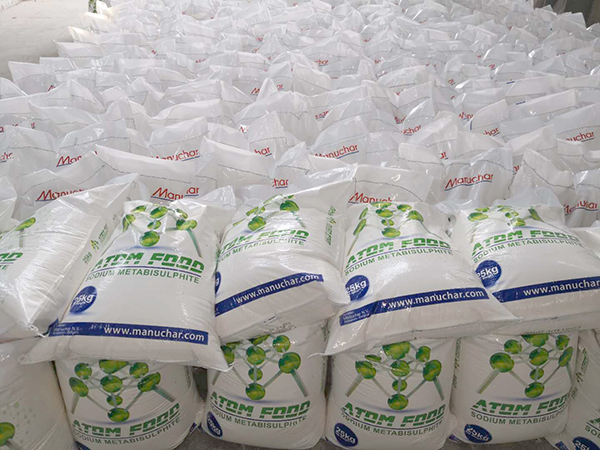What is the role of food grade sodium metabisulfite
Food grade sodium metabisulfite is a food additive that is widely used. In addition to bleaching, it also has the following functions:
1) Antioxidant effect. Food grade sodium metabisulfite has better oxidation. Sulfite is a strong reducing agent that can consume oxygen in fruit and vegetable tissues and reduce oxidase activity. It is good for reducing the oxidative damage of vitamin C in fruits and vegetables.
2) The release function can be used as a part of release.
3) Antiseptic effect. Sulfite can act as an acidic preservative, and unbound sulfite can reduce yeast. According to reports, food grade sodium metabisulfite has a reducing effect on E. coli. The reduction effect is 1000 times that of bisulfite. It is 100-500 times for beer yeast, and it is also relatively large for mold. When sulfur dioxide is acidic, it has a greater impact on the carrying microorganisms.
4) Anti-browning effect, enzyme browning often occurs in fruits and potatoes. Food grade sodium metabisulfite is a reducing agent and has a strong inhibitory effect on polyphenol oxidase activity. 0.0001% sulfur dioxide can reduce enzyme activity by 20%, and 0.001% sulfur dioxide can completely inhibit enzyme activity and reduce enzyme browning. In addition, it can also consume oxygen in food tissues and act as a deoxidizer. Food grade sodium metabisulfite can react with glucose, reduce the reaction between glucose and amino acids in food, and reduce browning.
Sodium metabisulfite is white or yellow crystalline powder or small crystals, with a strong SO2 smell, specific gravity 1.4, soluble in water, the aqueous solution is acidic, SO2 is released upon contact with a strong acid to form the corresponding salt, if it is left in the air for a long time, then It is oxidized to Na2S2O6, so the product cannot survive for long. Above 150 degrees Celsius, SO2 is decomposed.

